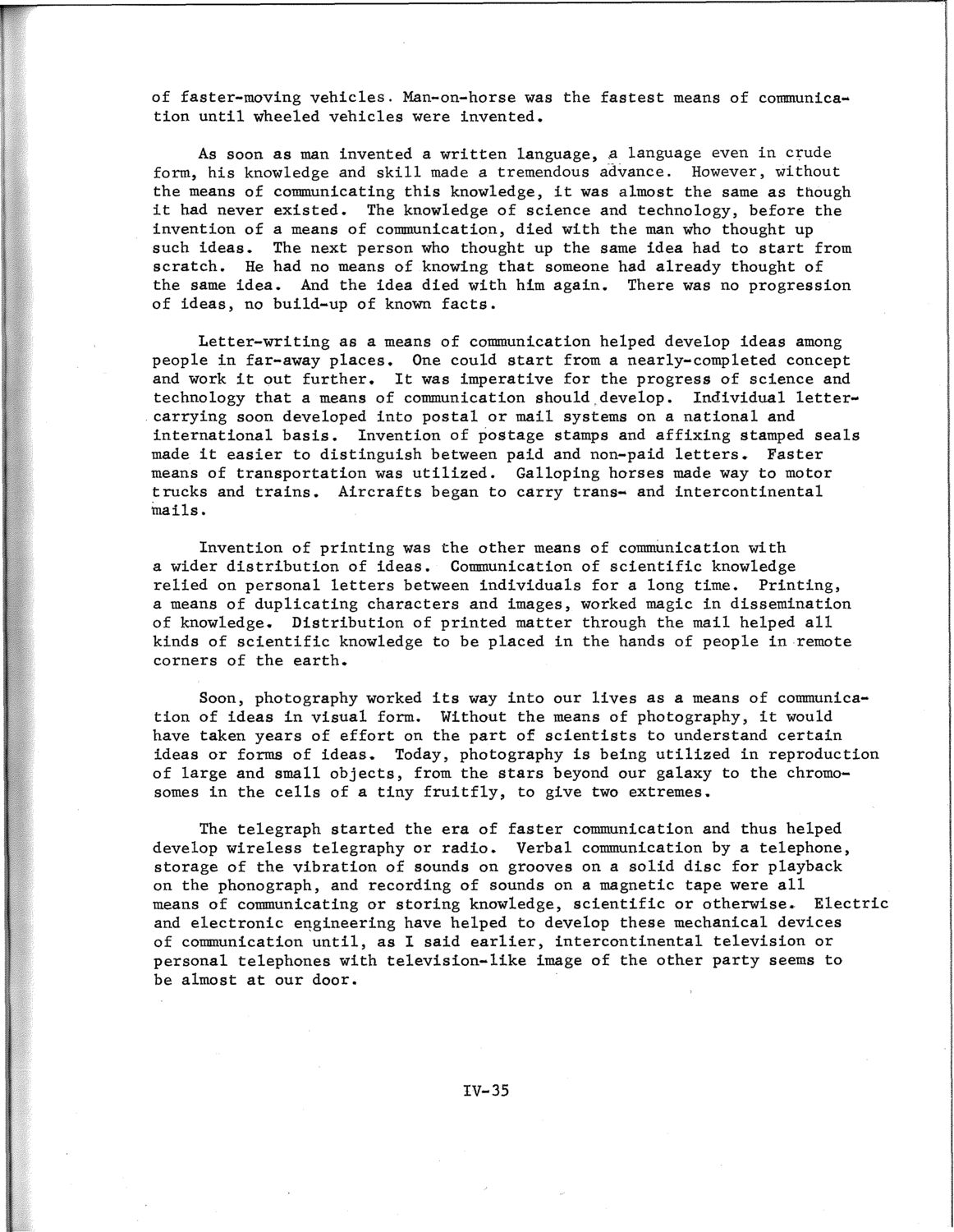| |
| |
Caption: SWE - Proceedings of the First International Conference of Women Engineers and Scientists
This is a reduced-resolution page image for fast online browsing.

EXTRACTED TEXT FROM PAGE:
of faster-moving vehicles. Man-on-horse was the fastest means of communication until wheeled vehicles were invented. As soon as man invented a written language, a language even in crude form, his knowledge and skill made a tremendous advance. However, without the means of communicating this knowledge, it was almost the same as though it had never existed. The knowledge of science and technology, before the invention of a means of communication, died with the man who thought up such ideas. The next person who thought up the same idea had to start from scratch. He had no means of knowing that someone had already thought of the same idea. And the idea died with him again. There was no progression of ideas, no build-up of known facts. Letter-writing as a means of communication helped develop ideas among people in far-away places. One could start from a nearly-completed concept and work it out further. It was imperative for the progress of science and technology that a means of communication should develop. Individual lettercarrying soon developed into postal or mail systems on a national and international basis. Invention of postage stamps and affixing stamped seals made it easier to distinguish between paid and non-paid letters. Faster means of transportation was utilized. Galloping horses made way to motor trucks and trains. Aircrafts began to carry trans- and intercontinental mails. Invention of printing was the other means of communication with a wider distribution of ideas. Communication of scientific knowledge relied on personal letters between individuals for a long time. Printing, a means of duplicating characters and images, worked magic in dissemination of knowledge. Distribution of printed matter through the mail helped all kinds of scientific knowledge to be placed in the hands of people in remote corners of the earth. Soon, photography worked its way into our lives as a means of communication of ideas in visual form. Without the means of photography, it would have taken years of effort on the part of scientists to understand certain ideas or forms of ideas. Today, photography is being utilized in reproduction of large and small objects, from the stars beyond our galaxy to the chromosomes in the cells of a tiny fruitfly, to give two extremes. The telegraph started the era of faster communication and thus helped develop wireless telegraphy or radio. Verbal communication by a telephone, storage of the vibration of sounds on grooves on a solid disc for playback on the phonograph, and recording of sounds on a magnetic tape were all means of communicating or storing knowledge, scientific or otherwise. Electric and electronic engineering have helped to develop these mechanical devices of communication until, as I said earlier, intercontinental television or personal telephones with television-like image of the other party seems to be almost at our door. IV-35
| |